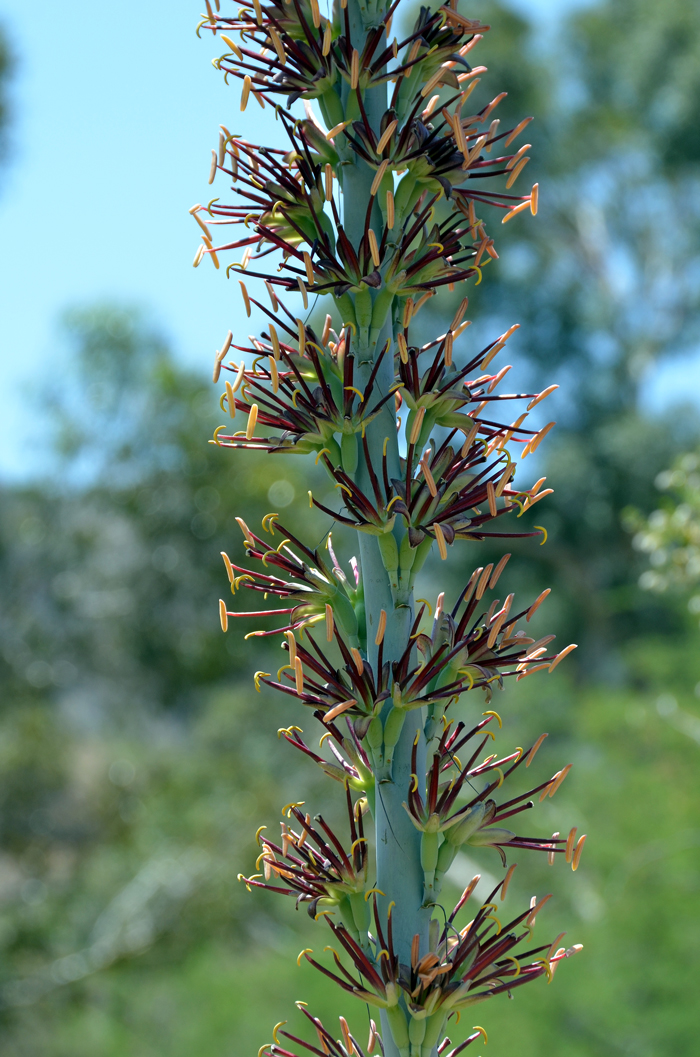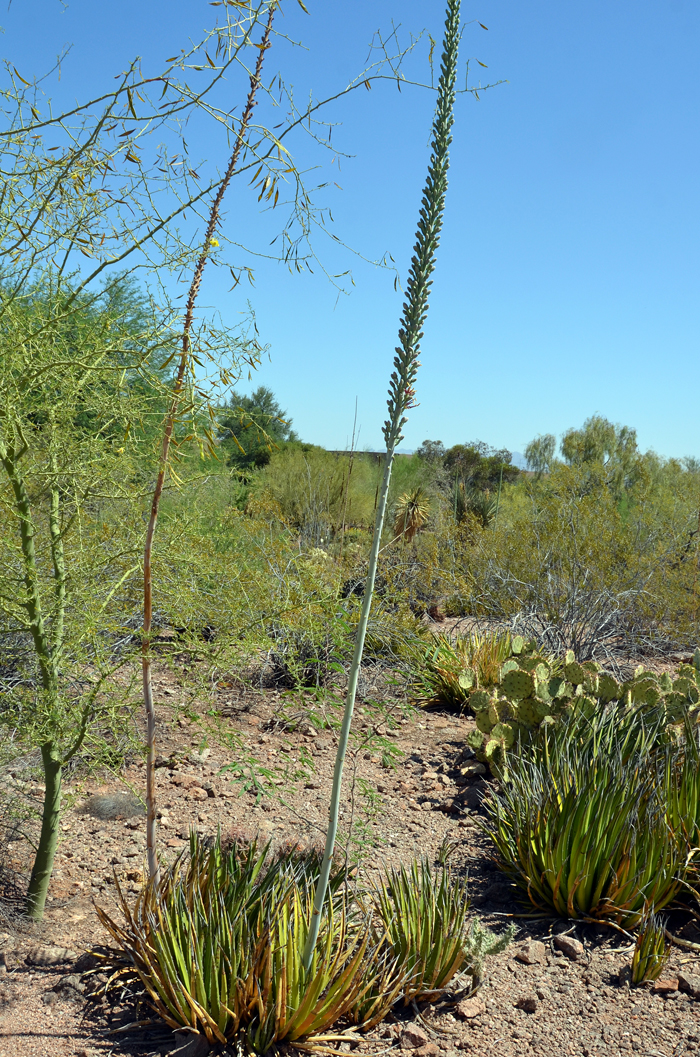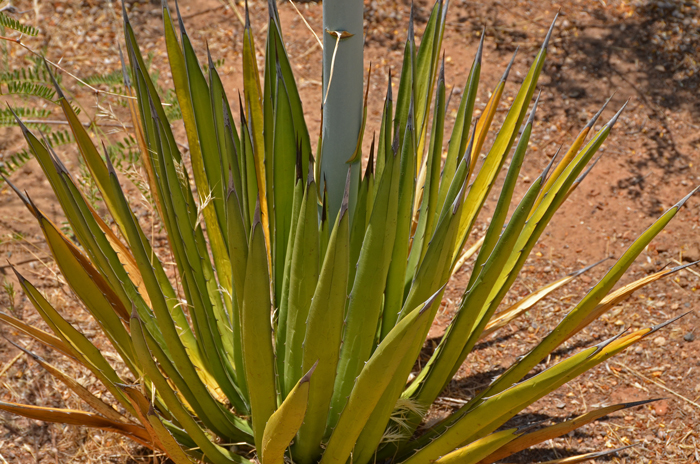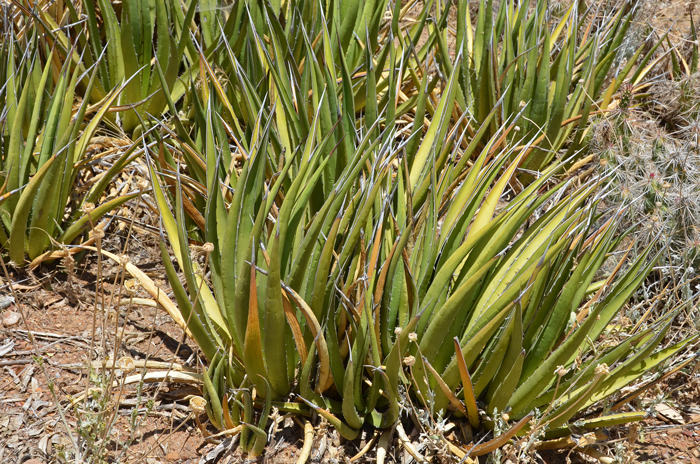Agave lechuguilla, Lechuguilla




Scientific Name: Agave lechuguilla
Common Name: Lechuguilla
Also Called: Maguey Lechuguilla, Shindagger
Family: Agavaceae, Agave or Century Plant Family (Reclassified to Asparagaceae)
Synonyms: (Agave lophantha var. poselgeri)
Status: Native to United States.
Duration: Perennial.
Size: Up to 9 (15) feet; ( 2.7 - 4.5m) or more tall; plants 1½ inches wide and 1 or 2 feet tall.
Growth Form: Forb/herb, shrub, subshrub; plants acaulescent; this species of Agave frequently develops suckers from rhizomes.
Leaves: Green, pale green or yellow-green; leaves thick, ascending to erect; leaf shape linear-lanceolate; leaves tipped with long stout sharp spines; margins also armed with spines.
Flower Color: Yellow and purple, often reddish-tinged; 2 or more flowers in small clusters; filaments also yellow or reddish, anthers yellow (see photo); stamens long exserted; inflorescence an unbranched spicate.
Flowering Season: March to July.
Elevation: 1,500 to 4,500 feet.
Habitat Preferences: Desert plains, mountains, desert scrub.
Recorded Range: Agave lechuguilla is found in the southwestern United States in New Mexico and Texas. It is the most common agave in the Chihuahuan Desert. It is also native to northeast Mexico.
North America & US County Distribution Map for Agave lechuguilla.
U.S. Weed Information: No information available.
Invasive/Noxious Weed Information: No information available.
Wetland Indicator: No information available.
Threatened/Endangered Information: In North America Agave lechuguilla are listed by the State of Arizona as salvage restricted under ARS § 3-903(B)(2).
In the Southwestern United States: Arizona has 12 species of Agave, California has 4 species, New Mexico has 5 species, and Texas has 9 species, Nevada and Utah have 1 species. All data is approximate and subject to taxonomic changes.
Comments: Agave lechuguilla, although poisonous to domestic livestock, is an important wildlife resource for a large number of mammals, birds and reptiles particularly in the Chihuahuan Desert. This species provides and excellent food source for mule deer especially during the spring following periods of new growth. In Texas, Lechuguilla is a frequent species in Bighorn sheep habitat. Javalina also feed heavily on Lechuguilla especially new young tender leaves.
In Southwestern Desert Flora also see: Goldenflower Century Plant, Agave chrysantha; Parry's Agave, Agave parryi; Schott's Century Plant, Agave schottii; Toumey's Agave, Agave toumeyana v bella; Toumey's Agave, Agave toumeyana.
Agave lechuguilla has been used to make fibers for cordage and hair brushes by southwester United States indigenous peoples.
Papago Fiber, Cordage. Leaves used to make rough cordage.
Papago Other, Cash Crop. Fibers and the cordage made from them bartered with the Pimas for blankets and cotton.
Pima Fiber, Brushes & Brooms. Fiber used to make hair brushes.
See ethno-botanical uses at Native American Ethnobotany, University of Michigan, Dearborn.

